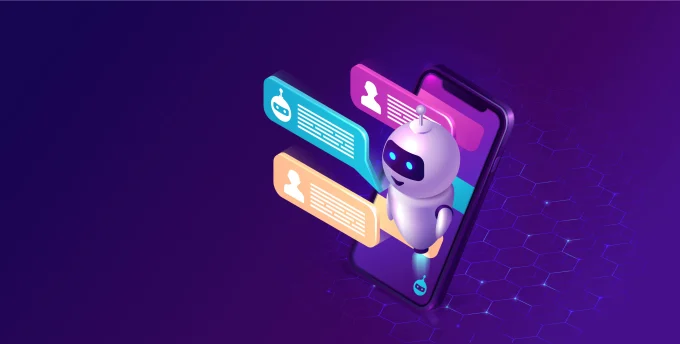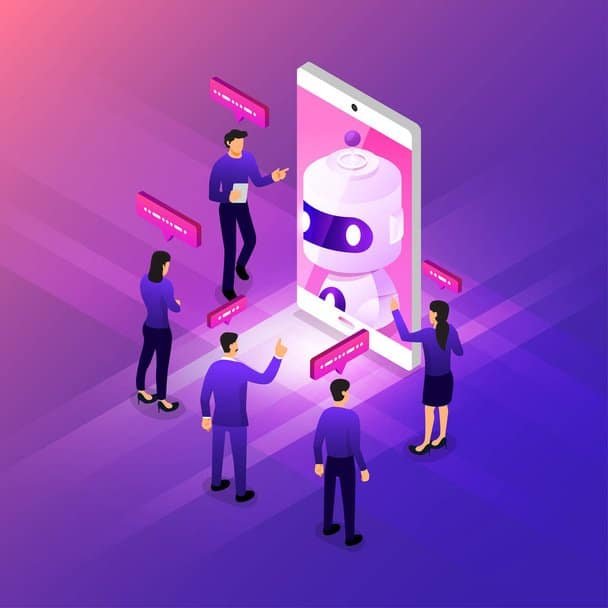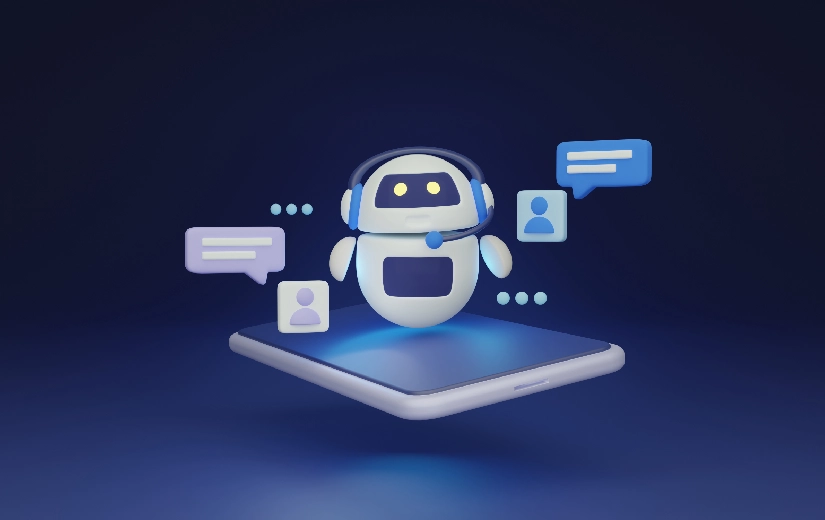OK, let’s get down to business: creating chatbots for your business! Because in the business world of today it’s no longer enough to rise above the rest—you simply have to find new and exciting ways to increase your customer engagement. And the latest buzzword in that field is the creative employment of chatbots. Chatbots enable businesses to provide 24/7 customer support, streamline communication, and personalize interactions, all of which are essential in today’s fast-paced market. By understanding the importance of chatbots in business, companies can enhance their operational efficiency and build stronger relationships with their customers. As technology continues to evolve, those who harness the power of chatbots will likely stay ahead of the competition.
Unleash the Power of AI-Driven Customer Engagement
You’ve heard it all before: customer experience is king. What if I told you that you could keep your customers happier than ever with round-the-clock, personalised customer support—without burning out your team or breaking the bank—thanks to a technology known as the chatbot? Unless you’ve been completely off technology’s radar during the past several years, you’ve probably heard of chatbots, the AI-based digital persons that companies are increasingly relying on to communicate with their customers.
Why Chatbots Are Your New Best Friend
Chatbots are an industry game-changer. A previous report by Juniper Research indicates that, by 2022, chatbots will save businesses $8 billion per year. Yes, that’s not a typo: billion dollars! It’s not just about efficiency; it’s about the capacity of chatbots to handle multiple conversations at a time, their ability to provide instant responses, and even a certain capacity to learn through interaction and improve over time—conversing with chatbots is like talking to a super-efficient, never-sleeping team of customer service workers.
The Magic Behind the Curtain
Underpinning a chatbot at its most basic level is a way of teaching a computer to talk human—albeit far more patiently and precisely than any human teacher—using natural language processing (NLP) and machine learning algorithms to decipher and respond to the original query. And they can be used to riff on any number of brief answers (to a mere FAQ, for example) as well as to conjure up far more substantial—even AI-like—recommendations for products or services.

Craft Your Chatbot Strategy Like a Pro
All right, enough back story; let’s talk strategy. A chatbot is not just a process of putting some code into your web browser and calling it a day. It’s a brand extension—it’s a part of the customer experience, so you want to make it a good one.
Define Your Chatbot’s Mission
Know why you’re doing this. Do you want to generate sales, answer customer support inquiries, and streamline your lead generation efforts? According to a report from Drift, 55% of companies use chatbots to generate leads. What’s your goal? Know it right from the start, as it will be a decision-making compass throughout the implementation process.
Choose Your Chatbot Battlefield
Where will your bot live? That depends on where your customers hang out. Your website? Facebook Messenger? WhatsApp? All of the above? Messaging apps are now more popular than social networks, according to Business Insider, so that’s worth considering as the place for your chatbot to live. Your platforms will matter a lot, making them highly impactful and engaging.
Build Your Dream Bot: From Concept to Reality
It’s finally time to train your chatbot with all those delightful responses! This is when your dream starts to become real. It is so cool.
Sketch Out Your Conversation Flows
Think of it as essentially plotting the conversations your chatbot is going to have. Come up with anticipated user inquiries, plan their responses and plan the plot flows that users might take through the dialogue. And therein lies the fun: you’re creating a choose-your-own-adventure novel for your customer service. Design these paths through your discussions on paper using flowcharts or mind-mapping tools. Make the conversation as natural and helpful as possible to take the user to the required destination.
Choose Your Tech Stack Wisely
Which technology to choose is a significant component. You can go with a no-code platform such as customers.ai, ManyChat or similar tools, or you can review pricier frameworks such as Dialogflow or Rasa, depending on your technical abilities, budget and wishlist. According to a market analysis by Mordor Intelligence, the global chatbot market is projected to register a CAGR of 34.75 percent during the period 2021-26, so the options are endless when it comes to innovative solutions.

Train Your Bot to Be a Conversational Genius
Intuition might say that you’d never send the sales intern out for a day’s work with customers alone. So why would you do the same thing with your company’s chatbot? It’s time to teach your chatbot manners.
Feed Your Bot a Healthy Diet of Data
The better-trained your chatbot is, the smarter it will get. This includes FAQs, product information, common customer queries and historical transcripts of your past customer service responses. Think of it this way: businesses currently receive 265 billion customer requests per year. That’s a lot of data! Use that data to train your chatbot for various scenarios and customise the answers to be as precise and helpful as possible.
Embrace the Power of Natural Language Processing
NLP enables your bot to have a natural human conversation With NLP, you can provide a level of human-sounding conversation that would otherwise be impossible for a chatbot. No one wants to have a conversation with a robot, so give your bot some flexibility and finesse to emulate natural human conversation. Google has an established solution named Dialogflow, while IBM Watson is becoming a new and powerful choice. One of the essential components of training your bot is learning how to fine-tune the NLP skills to enable your bot to decipher a wide range of phrasings. For starters, perform an analysis on the kindrasings from your business domain.
Test, Launch, and Optimize Your Bot for Success
You’ve got your bot, but your work is far from complete. Now it’s time to test it out and harden it for production.
Put Your Bot Through Boot Camp
The first rule is to work out your chatbot well in advance of putting it into production; run it through a range of different scenarios and edge cases and see if you can break it (trust me, your customers will!). In their report Messaging app use by consumers for customer service, Usabilla found that: ‘More than half of consumers would prefer to… communicate with a business through messaging apps to no longer communicate with a business through voice calls.’ You need to ensure it’s fit for purpose by testing it hard: checking the quality of its responses, how it handles errors, and how it incorporates an escalation path so that customers can speak to a human when necessary.
Launch with a Bang (and a Safety Net)
When you are ready to roll out your system, do it first to a segment of your user base so you can use real-world interactions to provide feedback on how things need to be adjusted before launching a full-scale rollout. And always consider your human takeover plan. ‘By 2022,’ suggests a Gartner report from 2017, ‘70% of customer interactions will involve emerging technologies such as machine automatic chatbots’, but as good as chatbots are becoming, for some interactions, there is still no substitute for human empathy and problem-solving.

Supercharge Your Bot with Continuous Improvement
Congratulations! Your chatbot is up and running! However, in the world of AI and customer service, standing still is the same as falling behind. Below you’ll find an instruction that describes a task, paired with an input that provides further context. Write a response that appropriately completes the request. Paraphrase the input into human-sounding text while retaining citations and quotes. ‘As your bot gets more experience, it will become even better at understanding the nuances of human language and better able to handle different sentence structures and slow users. So what changes can you make?
Enhancing and updating your bot is an ongoing process. Let’s say you built an order confirmation bot for customers in your online store. You went over training examples with the bot, which taught it how to reply to all kinds of requests relating to placing orders, tracking orders, and so on. Now, let’s take a look at how you can improve and update your bot so it can handle more complex or unusual requests and have more conversations with your users. The first step in the training process involves teaching the AI model what it needs to know. This involves labelling notable parts of your training data, such as identifying products and prices in customer orders and highlighting issues in customers’ reviews. At this initial stage, your bot can only respond to users using identical questions to those in its training examples.
Harness the Power of Analytics
Your chatbot is a treasure chest of user insights. Analyze your chatbot using analytics tools to capture critical metrics such as customer engagement and query counts. The same survey by Accenture also found that outside of ROI, the amount of effort required is also lower at 57%. With the right analytics tools, you’ll know where your bot can be improved and when to expand its capabilities.
Keep Your Bot in School
It never stops learning: Update its knowledge base when you launch a new product, service or introductory offer.Use machine learning algorithms to help your bot learn from its own interactions with users and get smarter with each new conversation. And finally, try it out: A report in MIT Technology Review revealed that 90% of businesses say they’ve seen an improvement in the time it takes to resolve complaints since using a bot. Keep adding to the intelligence of your chatbot, and your bot’ll continue to become a valuable tool, not to mention your best employee.
Conclusion
Framing a decision to adopt a chatbot as a series of steps implies a finished decision, but the real action comes long after your bot goes live. If the true value of the bot is realised through continuous improvement and customer-centric innovation, then every step along the way is an opportunity to improve your customer experience and find operational efficiencies.
As with all frontline employees, what’s really important to the success of your chatbot is a deep understanding of your customers, an appropriate technology, and a commitment to regular revision and refinement. As these and other AI and NLP technologies progress, so will the benefits of chatbots to operations and customer interaction.
But, are you ready for chatbot Nirvana? With a table stakes investment in time, intellectual honesty and a dash of humility, your chatbot will soon be a tool for deeper engagement, productivity and superior customer service. The future is conversational, and you’re invited.
FAQ
How long does it typically take to implement a chatbot for a business? The length of your onboarding plan will depend on how complex your needs are and what kind of talk platform you’re using. Simple bots can be up and running in just a few weeks, but more custom, sophisticated, deeply integrated solutions can require many months, even years. But remember to budget time for strategy development, the build process, testing and refinement.
What kind of return on investment (ROI) can businesses expect from implementing a chatbot? ROI will depend on the solution your business adopts, but with up to 30 of customer support, as well as greater sales conversions of 67 percent on average, the parameters for compilation of desired KPIs are clearly outlined to measure performance over a period of time.
How can businesses ensure their chatbot maintains a consistent brand voice? Keeping your brand on-message with your chatbot means you need to plan and refine over time. Define your brand voice clearly, and create a long-term style guide for your bot’s answers to refer back to; periodically review the language of your bot, and also involve your marketing team. Refer to your chatbot analytics if your tone of voice seems out of keeping with what is suggested by the metrics.
Similar Content
- How to Create a Chatbot: Make Your Own Bot for Free in 2024 [No-Code]
- The Essential Guide to Implementing AI Chatbots in Your Business

